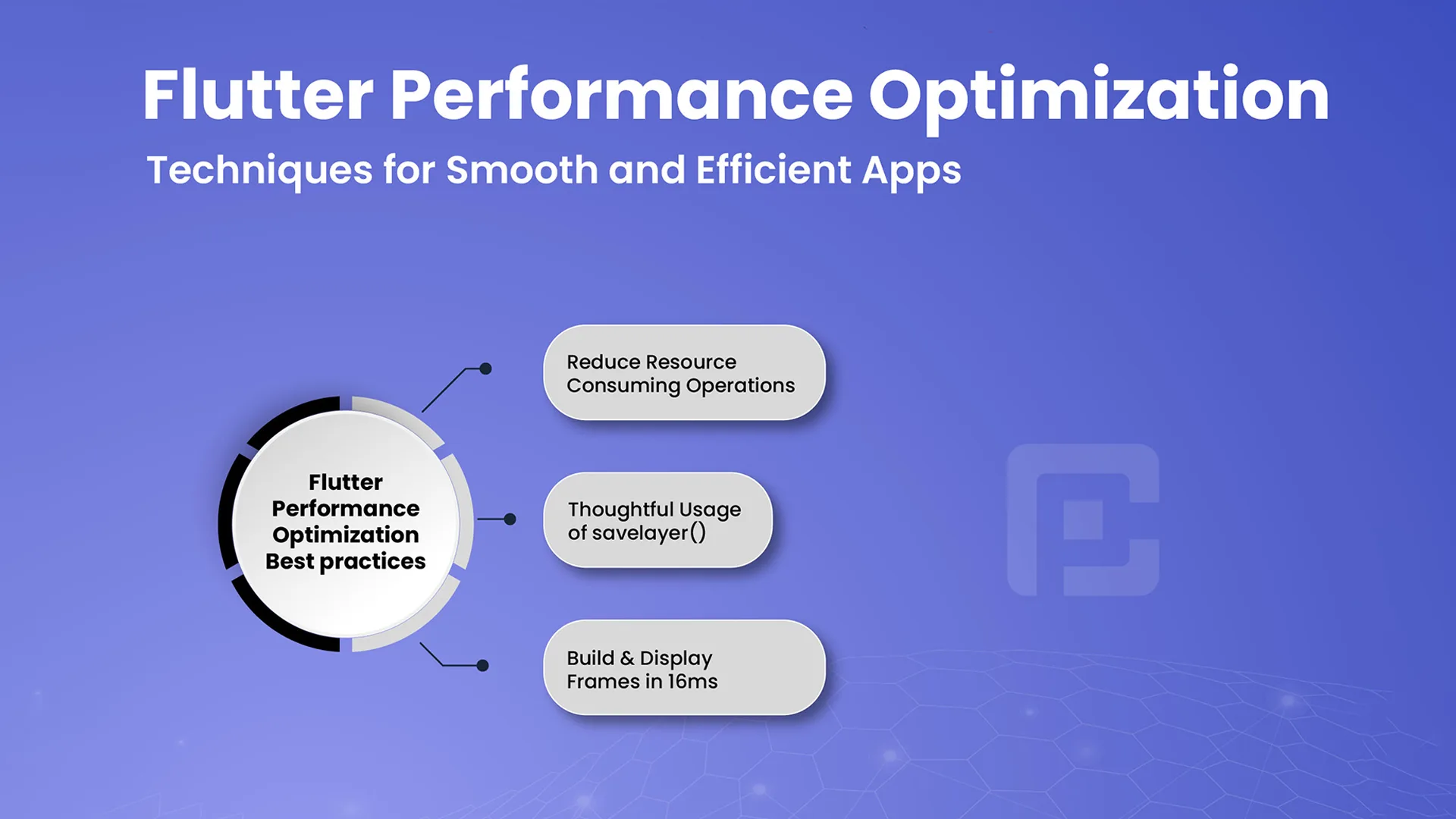Flutter Performance Optimization: Smooth & Efficient Apps

28 June
When it comes to building Flutter apps, performance optimization is crucial for delivering a seamless user experience. In this article, we will explore a range of techniques and best practices for optimizing Flutter app performance. By implementing these techniques, you’ll be able to create apps that are smooth, responsive, and efficient. Let’s dive into the world of Flutter performance optimization!
Profiling and Benchmarking
Profiling and benchmarking are essential steps in identifying performance bottlenecks and measuring the impact of optimizations. We’ll explore tools like the Flutter DevTools and Dart Observatory that provide insights into app performance. With real-world examples, we’ll demonstrate how to analyze and interpret performance metrics to guide your optimization efforts.
Widget Optimization
Widgets play a crucial role in Flutter app performance. We’ll discuss techniques such as minimizing widget rebuilds, utilizing const constructors, and leveraging widget lifecycle methods effectively. Through code examples, we’ll showcase how these optimizations can significantly improve app performance and reduce unnecessary overhead.
Managing State Efficiently
Inefficient state management can lead to performance issues. We’ll explore different state management solutions, such as Provider, Riverpod, and Redux, and discuss their performance implications. By using state management techniques tailored to your app’s needs, you can minimize unnecessary UI updates and improve overall app performance.
Image and Asset Optimization
Images and assets can impact app performance, especially when dealing with large files or loading them inefficiently. We’ll cover techniques like lazy loading, asset compression, and caching strategies to optimize image and asset handling. With practical examples, we’ll demonstrate how to strike a balance between visual quality and performance.
Network Optimization
Efficient network communication is essential for responsive app experiences. We’ll explore techniques like HTTP request optimization, caching, and data compression to minimize network latency and reduce data usage. By implementing these optimizations, you can create apps that load content quickly and efficiently, even under challenging network conditions.
Performance Testing and Monitoring
Continuous performance testing and monitoring are crucial for maintaining optimal app performance over time. We’ll discuss strategies for setting up automated tests and monitoring tools to catch performance regressions early. We’ll also cover techniques for gathering performance data from real-world users to identify performance issues specific to different device configurations.
Conclusion
Congratulations on gaining a deeper understanding of Flutter performance optimization techniques! By incorporating profiling, widget optimization, efficient state management, image and asset optimization, network optimization, and performance testing, you’ll be able to create Flutter apps that provide a smooth and efficient user experience. Remember, performance optimization is an ongoing process, so continue to monitor and refine your app’s performance as you iterate and enhance your app.
Happy optimizing!





